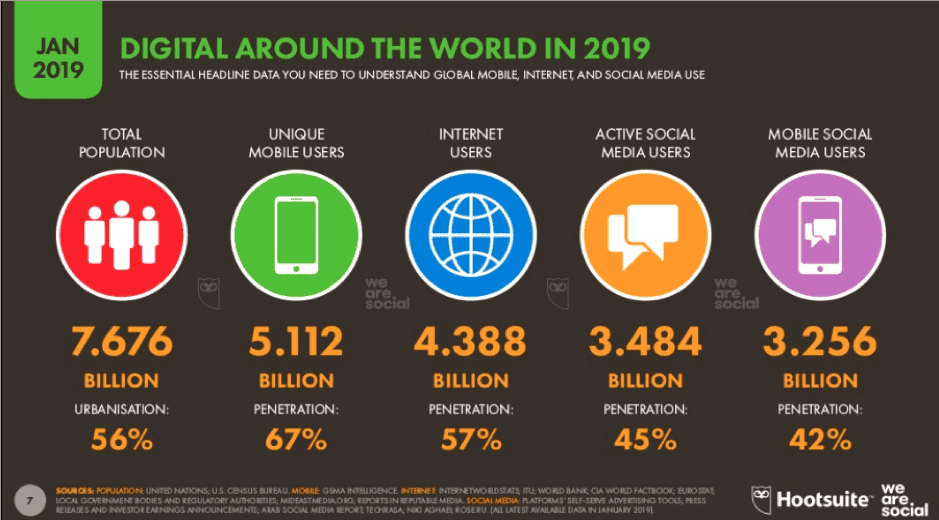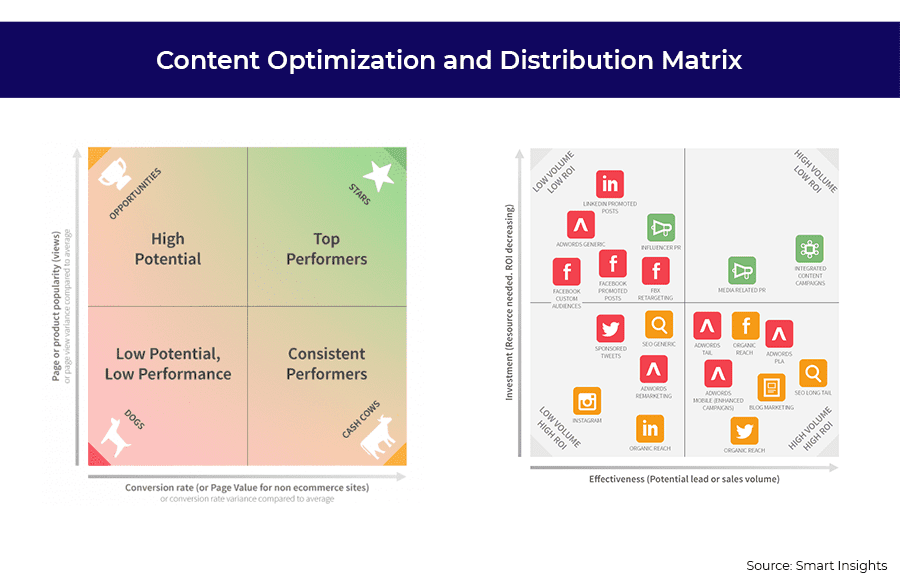By Akshara Bala
Organic reach for brands on social media is declining steadily. According to Hubspot, the current reach on Facebook sits at less than 2%. Despite the odds, it isn’t impossible to create a content plan to extract maximum value for brands. While organic transactional content has seen mixed results. The same, when used for brand awareness, has seen some favorable results through community engagement. It helps remove barriers and apprehensions around the product, answer customer queries and also explains how the product works – in short, it helps build a community of brand fans.
Combating Social Media “Detox”
The below infographic by Hootsuite seems promising for brands. With over 3.4 billion active users on social media, it does seem like a great place for brands to engage, right?

Despite the numbers, the fact is that a lot of people are “quitting” social media because they feel overloaded by it. Combined with trust factors and privacy issues, social platforms are seeing a downward spiral, and 2020 will see more people quitting these platforms.
Having said that, brands need to divide their marketing assets among several platforms and not completely focus only on social media organic posts. Social media marketing is almost like a brand hygiene initiative, and should ideally be part of a larger content marketing strategy that involves other avenues like paid ads, search campaigns, etc.
5 Steps for Building an Engaging Content Marketing Strategy

A big part of creating meaningful and valuable experiences on social media is the engagement that brands have with their audiences. It’s important to keep the audience at the center of content creation. This will help nurture interactions without being limited to simple likes or shares. Here are a few pointers on creating content.
1. Build a Content Matrix
By creating a content matrix, you ensure that you are focusing on content production activities that matter to amplify your organic reach. The sweet spot is on the bottom-right corner of the matrix, where your content is aligned with your brand and is acing performance. A matrix will also help you understand how your other marketing initiatives are working with each other.
2. Perform a Content Audit
One of the first things to do is to undertake a content audit. By looking at the best performing content, you can pick out the factors and join the dots to figure out a content pattern that has worked well in the past. In the same way you can identify what hasn’t worked and work towards avoiding such content pieces.
3. Maintain Brand Voice
It’s important to look at the tone and the messaging structure. For instance, by digressing from the brand’s voice, your audience will lose the connect with what you are trying to communicate. Most often irrelevant and inauthentic content leads to bad engagement. It’s important to understand that your followers continue to follow you for a specific reason(s) and value addition, and, it’s essential that you don’t disregard their intent through your content.
4. Create Content
The best way to build content is to map your audiences’ needs with your offerings. When you map the pain points of our audience, you will be able to structure your solution offering in a way that would aid them. Based on these ‘pain points’ structure your content in a way that resonates with what your audience might be looking for. Looking at your competitor’s content is also a good place to take your content inspiration from. Here are a few content pointers to keep in mind:
- Maximize (brand) personality – Personality is what connects people to your product.
- Minimize promotional content, provide value instead.
- Explore different content formats like videos, gifs, images.
- Use different content pillars – Interactive content (quizzes, ask the audience questions), thought-provoking content, brand awareness, etc.
- Use hashtags to join conversations to create conversation around a common thread.
- Align content with the brand voice to help deepen the customer relationship.
5. Post Consistently
Use a content calendar to help ensure post consistently – this will increase the effectiveness of your strategy. The key here is not to post daily on every platform. It’s important to consider your audience. An editorial calendar allows you to concentrate on creating specific audience-first content.
Experiment with the days and times that your audience will be most likely to engage with your content, so you can make the most of your organic reach. This can be identified by gaining a deeper understanding of your audience and their usage behavior. For instance, when you want to engage your audience with interactive content, then it’s important to pick a time that would be ideal to facilitate such interaction.
5 Strategies for Boosting Organic Performance
A lot of brands, despite a huge following, have extremely low levels of engagement when it comes to individual posts, with the engagement almost non-existent. Here are a few ways to combat this.
1. Community Building
Although not a new concept, community building helps bring engagement around a brand’s content. This could mean encouraging your internal teams to create a strong presence and also work towards building thought leadership content. This would lead to creating an authentic voice and promote overall brand trust.
Social media groups helps create conversations around the brand. While there is no sure guarantee that people will join the same, it will help add a human element that could potentially lead to better brand engagement.
2. Micro-Influencer Marketing
Micro-influencer marketing is the next big thing, although not completely free, it can help brands seem more honest and genuine. Micro and nano influencers can also help be a part of the community building process. Conversational marketing campaigns have proven to build trust and also directly influence buying decisions. Apart from creating a positive brand sentiment, it also gives a favourable customer experience that sticks.
3. Alternative Platforms
While several brands focus on Facebook and Instagram, there are other platforms with a completely different user base that could prove to be beneficial for brand building. Platforms like Pinterest, Snapchat and TikTok have seen significant returns, especially for eCommerce businesses. A recent research from Neustar shows that Pinterest has been over 2.3x more efficient when compared with traditional social media platforms. And, this data is not surprising especially because Facebook has seen a huge drop in young users.
4. Customer Care
No matter what platform is being used, customer support is an integral part of creating brand experiences. Statistics from Drift in 2018 suggested that a lot more people are using social media to converse with brands. In fact, brands like Fitbit and Etihad have separate Twitter handles for support. With an active support presence on social media, brands can lead on to community building and better brand engagement.
5. Social Media Stories
Stories from brands offer a different experience compared to normal graphic creatives that are a part of the actual social media feed. There is a lot of room for experimentation with stories, ever since the trend caught on from Snapchat. The audience expects to have conversations and be privy to other footage like uncut visuals and behind-the-seen footage. Gone are the days of “well-touched” artwork. Not that artwork will not work, but stories help create a “real” experience that audiences crave.
Closing Thoughts
It’s important to keep in mind that we’ve entered a decade where social media platforms will begin to age, if they haven’t already. This transition can especially be confusing for brands that enjoyed a good social media presence earlier. The best course of action is to experiment with content formats like videos and webinars, try out A/B testing, and choosing conversational talking points. No matter how you structure your content, be relatable, transparent and strive to build content that is unique and helps you stand out from the crowd.

